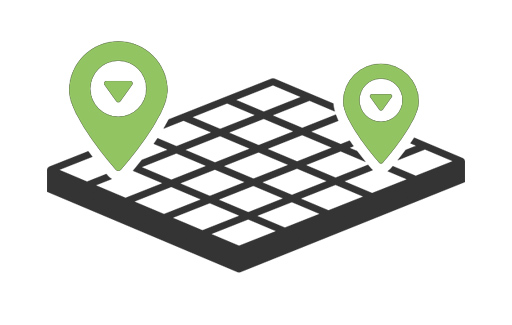Wouldn’t it be great if there were a central database that could tell you where you’d left your most important possession … and, more than that, the platform reported its disposition, such as whether your high-ticket items are being properly taken care of?
Though we may not have access to such tech just yet, programs very much like them are not uncommon across a variety of industries. These programs are known as real-time location systems (RTLS); they are the modern version of a very old tool and provide a technology that can benefit your business greatly.

Contents
Where Is It? The Basics
In the simplest sense, RTLS can support your business by tracking exactly where your most important assets are at all times, and, not just knowing their location, the program knows their exact disposition. This capability is critical for large warehouse facilities, which began using RFID tracking technology in the 1990s.
These basic, affordable trackers continue to be widely used to manage inventory and prevent theft and property losses, though they aren’t able to provide much further information beyond location.
Upgraded: Optimization And Maintenance
While RFID trackers provide businesses with basic location data, larger organizations often use more complex RTLS systems to help them optimize operations. These include tools designed to enable the firm to operate with fewer resources by optimizing asset deployment.
Inefficient asset use, whether that refers to the uneven deployment of machinery that’s causing unnecessary wear or poor routing that wastes time, can cripple your operation. Being able to see both where your key assets and where they’ve been can ensure you don’t suffer any untimely breakdowns and other unexpected setbacks.
Safety Strategies: The Hybrid Workplace
One of the most significant changes to come to the aid of warehouse environments in recent years has been the introduction of heavily automated processes, including robots placed alongside human workers. This has been beneficial from the perspective of productivity, but not quite so great with regard to issues of safety because collisions between robots and human workers have occasionally resulted in serious injuries to the latter – but RTLS can help to minimize that.
By outfitting workers with a simple device that’s detectable to robot coworkers, such as a locator that can be affixed to a nametag, human employees can be better protected from collisions and other events that can cause injuries. Another specialized workplace technology integrates fall sensors, which can be very useful in large warehouses, because they instantly alert safety teams about a possibly injured employee, even if the worker is not visible to anyone else.
Healthcare Tracking: Putting Safety First
Despite being a markedly different setting from warehouses and more industrial environments, healthcare sites also have been making excellent use of RTLS technology. For example, hospitals use it to prevent infants from being removed from maternity wards without proper authorization.
RTLS also serves to keep track of surgical instruments. In fact, by using the same simple RFID technology that is common in warehouse environments, surgeons can make sure they don’t lose items in the surgical field, especially inside the body of a patient, which helps to prevent complications and infections.
Medical centers also use RTLS to track expensive equipment as it shifts around their facilities.
RTLS was once as simple as a bell placed inside a piece of pottery so the owner would hear it when it was moved. Now it has become an advanced tool that’s essential to the success of many industries.
That’s because companies are no longer concerned about mere location. Now the benefits encompass prevention of property loss, protecting patients, monitoring of maintenance, and much more. How can any business afford not to make use of that?
